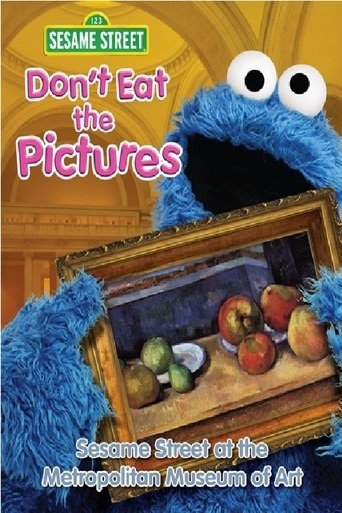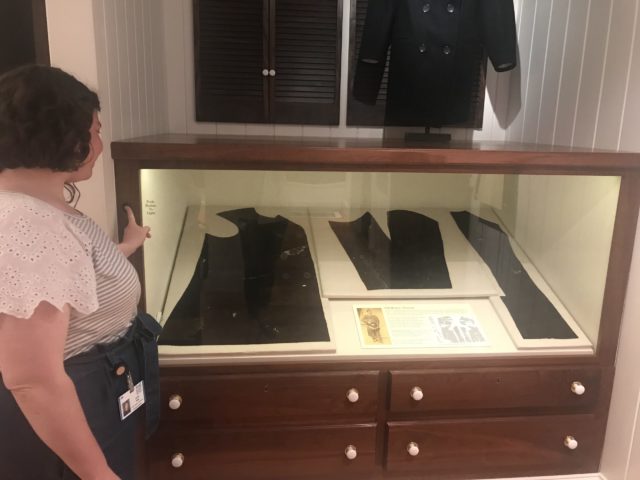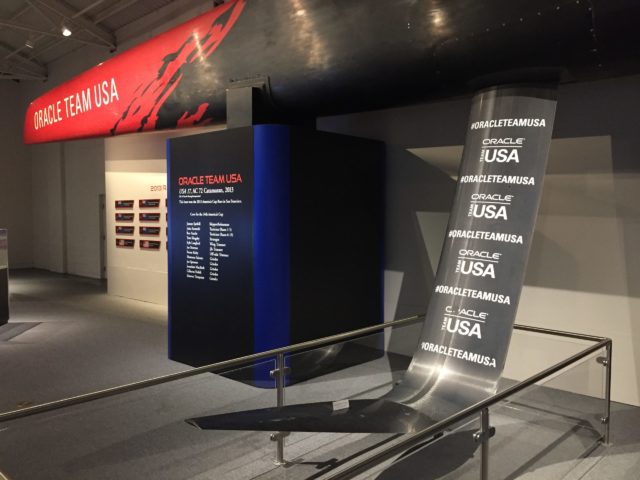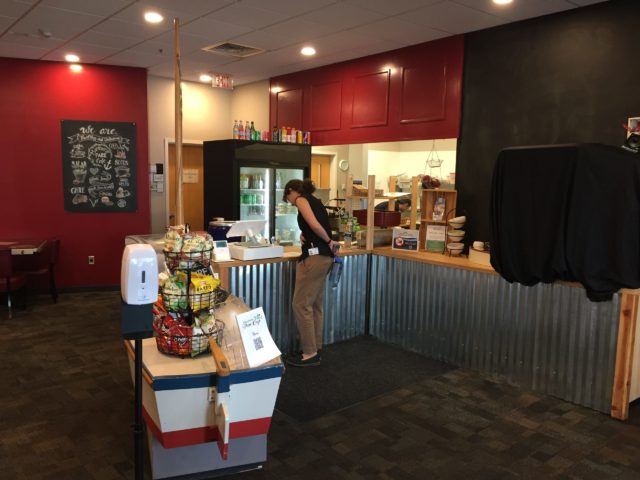When I was little, Sesame Street aired a special called “Don’t Eat the Pictures: Sesame Street at the Metropolitan Museum of Art.” I adored it. For those who didn’t watch the VHS tape on repeat, the gang go to the Met and accidentally get locked inside for the night. The story focuses on Big Bird helping the spirit of an Egyptian boy to reunite with his parents. Meanwhile, Cookie Monster is struggling with his desire to eat all of the paintings depicting food. But Bob points to the sign that says “Please don’t eat the pictures!”

Digesting the art is an obvious “no”, however, sometimes it seems like museums say “no” to things without a reason. I promise we’re not trying to dampen anyone’s fun. These rules are designed to protect both the collection and people.
Now that we’re open again (YAY!) and welcoming people back into the galleries, I thought it’d be fun to celebrate in the nerdiest way possible; facts! In this post I’ll explain some museum etiquette basics and talk about some extra services museum’s offer that you might not be aware of. Hopefully it’ll answer some questions you’ve had but never thought to ask.
“No Photography” or “No Flash Photography”: What’s the difference?
Most museums, including ours, allow photography for personal use in the galleries. So go on, post those art doppelgänger selfies to Instagram (#iamaMariner)! But if you see a “No Photography” sign there’s a few possibilities. It may be usage restrictions related to copyrights, owner permissions, or artist requests. It’s also a crowd control measure to keep people moving. You’ll often see this for traveling exhibits or highly visited sites like the Sistine Chapel.
Another common reason is to be respectful of culturally sensitive items and their creators. Human remains, religious objects, and artefacts from genocides or slavery are part of this category. Restricting photography allows for a more thoughtful and emotional connection with these items and the people associated with them. For human remains it is a reminder that although the individual is on display, they are still a person.
Preservation is another major reason. Gallery light levels are determined by the type of material on display. Textiles, manuscripts, and watercolors fade in strong light. To keep their colors vibrant, we keep the lights dimmed. Camera flashes use intense light that can damage light-sensitive materials. Even though it’s less than a second, if everyone takes a flash photograph this damage adds up. “No Photography” and “No FLASH photography” mean the same thing in this case. Usually a highly visited object, like a Renaissance masterpiece, will have a complete photo ban because the number of people who will forget to turn off their flash makes a “no flash photography” sign virtually useless.

Really love something? Our digital services departments can print custom high-quality reproductions of works in our Collections (Check out Lisa’s blog post for more information). My affordable go-to alternative: buy a postcard in the gift shop. Already printed and it’s guaranteed to be better than the one on my phone!
From a distance: “Do not touch”
Humans want to experience things with all our senses, so I get how tempting it is to touch museum artifacts. However those “no touching” signs are there not just for the object’s protection, but sometimes yours as well. For example, AC72’s hydrofoils are razor sharp to reduce friction and increase its speed, and they can easily cut an unsuspecting guest.

Touching leaves residues on surfaces from oils and dirt. Add more force and brittle parts can snap or wobbly things can fall over and shatter (for more on this, check out an earlier blog post). Another important reminder is don’t lean on vitrines (glass cases). They’re designed to keep out dust, not support weight. It could break and fall onto the object and potentially injure you too.
In addition to signs, displays use platforms or stanchions to provide objects with breathing room. A barrier’s main job is to prevent damage from touching, but it also prevents damage from humidity changes. Paper and paintings can be susceptible to tiny amounts of humidity changes which can cause microcracking, curling, and even corrosion of metal-based pigments. Basically, we’d prefer if people didn’t breathe on the artwork. Barriers also reduce the risk of theft or vandalism.
Coat checks and bag lockers
Often museums will ask you to check your backpacks or umbrellas in the lobby. The bag ban is mainly to prevent accidental collisions with objects and other visitors. Umbrellas leave water trails through the galleries which in addition to causing humidity issues can also be a slip hazard. I personally love this option because I hate being bogged down with my winter coat or sopping umbrella when I’m trying to enjoy the exhibit.
Eat, drink, and be merry… in the café
“No food beyond this point” may be the most common sign in museums. It is much easier to maintain an object’s condition than it is to clean it. Fingerprints can cause enough damage on their own. Now add food residues to the mix and it could be a devastating combination. The object will have to come off exhibit for conservation and there is the possibility, depending on what the stain is and how fragile the object is, that we may not be able to fully remove the deposits, altering the object permanently. Crumbs and stains in the galleries encourage pests to come in and “eat the pictures” or furniture, or tapestries, or canoes… Anything organic is fair game. Bans on live plants for events in the galleries are extensions of this policy, because they will draw insects or even transport them inside.

Thank you for not smoking
Fire can devastate a collection. Open flames, either from catering equipment or candles, are kept to a minimum and are only for special events where they are monitored closely. Cigarettes are banned in most indoor places due to health concerns, but what about e-cigarettes? Are these ok in galleries? The danger of an open flame is eliminated, but e-cigarettes can still deposit residues and pollutants on artifacts just like traditional cigarettes. These deposits can chemically alter materials and obscure surfaces.
Museums for All
Museum’s are increasingly focused on accessibility and providing a meaningful experience to a diverse audience. The Victorian idea of cramming objects in glass cases with tiny labels is obsolete, but there’s still more to be done. Updating galleries with new technology and offering multiple types of experiences is vital. Check a museum’s website or contact them prior to visiting to get an idea about the types of experiences they offer. And please share your thoughts if you’d like. We love to hear from guests how we can improve their visit (this is why we now have more benches in the galleries!). Our mission at the Mariners’ is to connect everyone to the water and each other. We want people to come here and say “this is MY museum!”
On the second Sunday of the month, The Mariners’ Museum hosts friendly hours” for guests, including those with mobility, cognitive, or physical challenges, who prefer to experience the Museum in a quieter, less crowded environment with reduced sound and lighting.” Click the link to reserve a ticket.
Happy Trees
Artists often come to museums to practice technique and gain inspiration. Most museums welcome sketching in their galleries and may even have artist’s stools available at the front desk. Check with a museum on their policies before visiting. This activity may be restricted until social distancing and capacity restrictions are lifted. And verify what is allowed; often only pencils are acceptable as they create the least mess and removing pencil marks is fairly straightforward.
But wait, there’s more!
Ask at the front desk or look online before you visit to learn about extra activities and programs. The Mariners’ has a galleries scavenger hunt for young mariners as well as family activities throughout the year. Museum’s host different types of lectures and informal talks as well. We have both a more formal Thursday evening lecture series that runs through the year as well as daytime talks and gallery tours by docents and curators.
Behind-the-scenes tours are popular, too. It’s a chance to view collections storage, conservation labs, or get a close up look at rare objects. Call a museum ahead of time to check availability since most services are temporarily suspended. There’s lots of fun events coming up at the Mariners’ (hint hint)! Follow the link to learn what’s happening this month.

See you soon!
Often the rules boil down to respecting the needs of the collection and visitors’ safety. And they’re easy to follow. Lots of museums have hands-on sections in galleries to feed our tactile desires. And who really wants to scarf down crackers in the gallery when they can have a nice rest and a tea in the café? And check online or ask at the desk to see what other activities are available to personalize your visit. Feel free to ask about anything in the comments or the next time you visit in person. And remember, please don’t eat the pictures. They’re for all of us to enjoy!